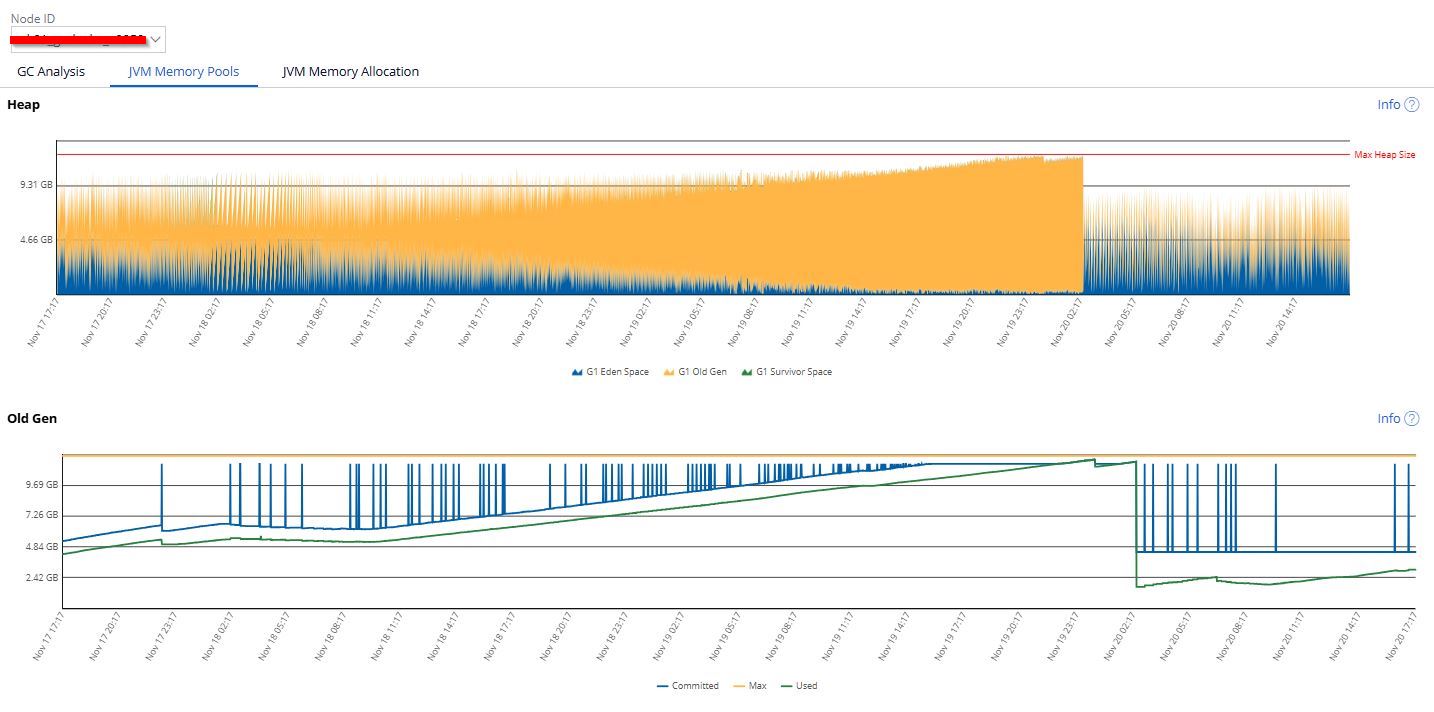JVM OutOfMemory : Memory leak
On our production environment, we have noticed memory leaks on nodes of type "Web User" and "Real Time" (4 out of 25 nodes in total). The JVM Heap increases until an OutOfMemory error occurs (see image 1), once or twice a week. These nodes consume external Kafka streams and receive service calls (REST API, HTTP, SOAP, etc.).
The number of received calls is relatively high:
- ~1M per week for HTTP calls
- ~13k per week for REST API calls
- ~2M Kafka streams consumed
It is not easy to identify the cause of these memory leaks. However, we have focused our research following the execution of the query (after consulting https://docs.pega.com/bundle/pega-diagnostic-center/page/pega-diagnosti… and https://docs.pega.com/bundle/platform/page/platform/system-administrati…):
On our production environment, we have noticed memory leaks on nodes of type "Web User" and "Real Time" (4 out of 25 nodes in total). The JVM Heap increases until an OutOfMemory error occurs (see image 1), once or twice a week. These nodes consume external Kafka streams and receive service calls (REST API, HTTP, SOAP, etc.).
The number of received calls is relatively high:
- ~1M per week for HTTP calls
- ~13k per week for REST API calls
- ~2M Kafka streams consumed
It is not easy to identify the cause of these memory leaks. However, we have focused our research following the execution of the query (after consulting https://docs.pega.com/bundle/pega-diagnostic-center/page/pega-diagnosti… and https://docs.pega.com/bundle/platform/page/platform/system-administrati…):
SELECT max(pxbytesallocated), pxsystemnodeid, pxrequestortype, pxsnapshottype, pxapplication, pxproclabel, pyuseridentifier, pxrequestorid FROM pr_perf_stats WHERE pxsystemnodeid like '%wbs%' AND pxbytesallocated IS NOT NULL GROUP BY pxsystemnodeid, pxrequestortype, pxsnapshottype, pxapplication, pxproclabel, pyuseridentifier, pxrequestorid ORDER BY max(pxbytesallocated) DESC;
This query shows snapshots with significant allocated memory on HTTP service calls across our different nodes (see image2). This has helped us focus our investigations on certain HTTP services. We then tried to reproduce this on a Quality Assurance environment, using the following process:
1. Enable logs to allow Requestor identification:
- pxIntegration.RequestorPools
- pxIntegration.Service.REST
2. Execute a "simple" API call belonging to Pega (/api/v1/nodes), with basic authentication.
3. Identify the Requestor:
2025-11-26 10:28:30,883 [nssl-nio-8443-exec-9] [ ] [ ] (com.pega.pegarules.session.internal.mgmt.RequestorPoolManager) DEBUG host|ip - Getting pooled requestor for service package api 2025-11-26 10:28:30,883 [nssl-nio-8443-exec-9] [ ] [ ] (com.pega.pegarules.session.internal.mgmt.RequestorPoolCommonsV2) DEBUG host|ip - activateObject: A090HZDOOT77KCLSNCFZ5EBA9QMZOL8YOA
4. Record the "Performance details" of the identified Requestor (see image3).
5. Massive API calls (via PostMan) => 10k API calls.
6. Record the "Performance details" of the identified Requestor (see image4).
On the last image, we can see that the allocated memory is increasing, and it never seems to be released.
Is this normal behavior? Is the memory truly never released?
Are there any other leads to identify the memory leak ?




